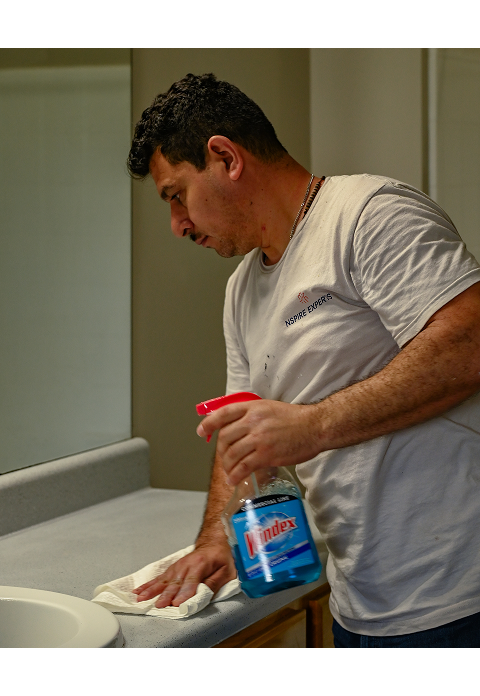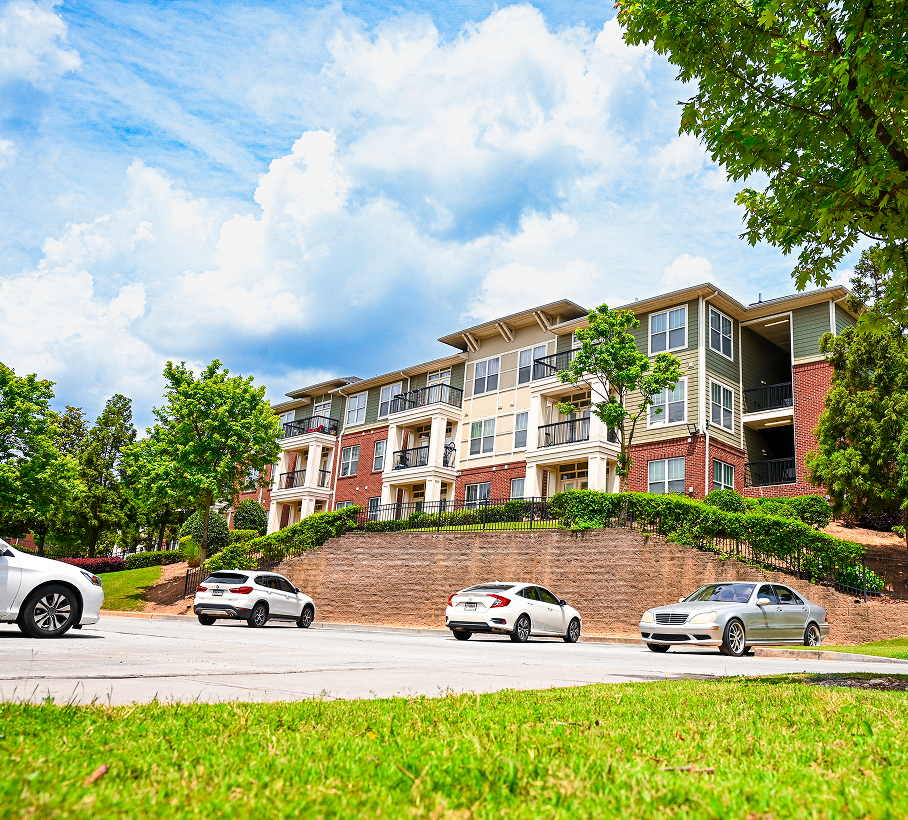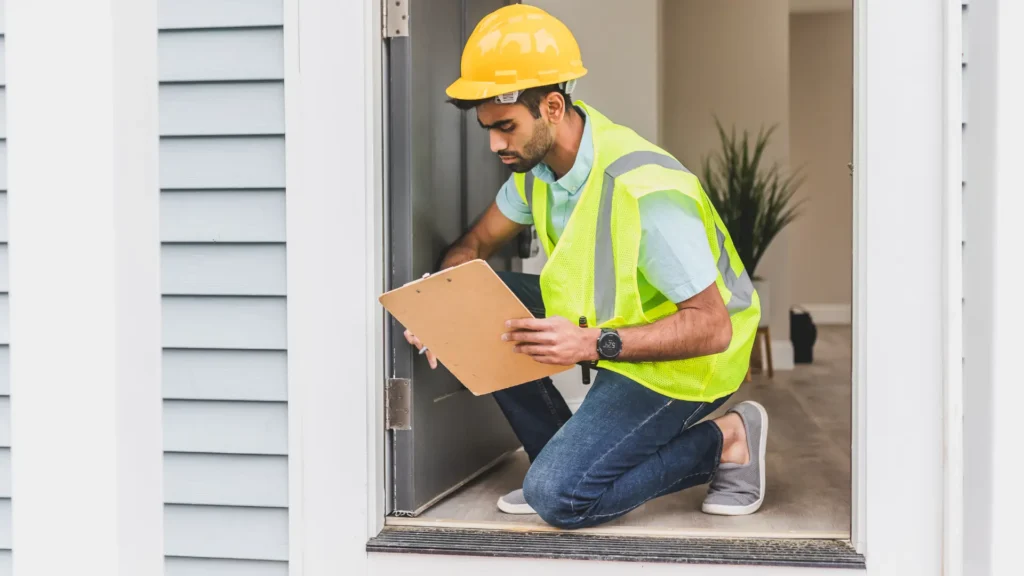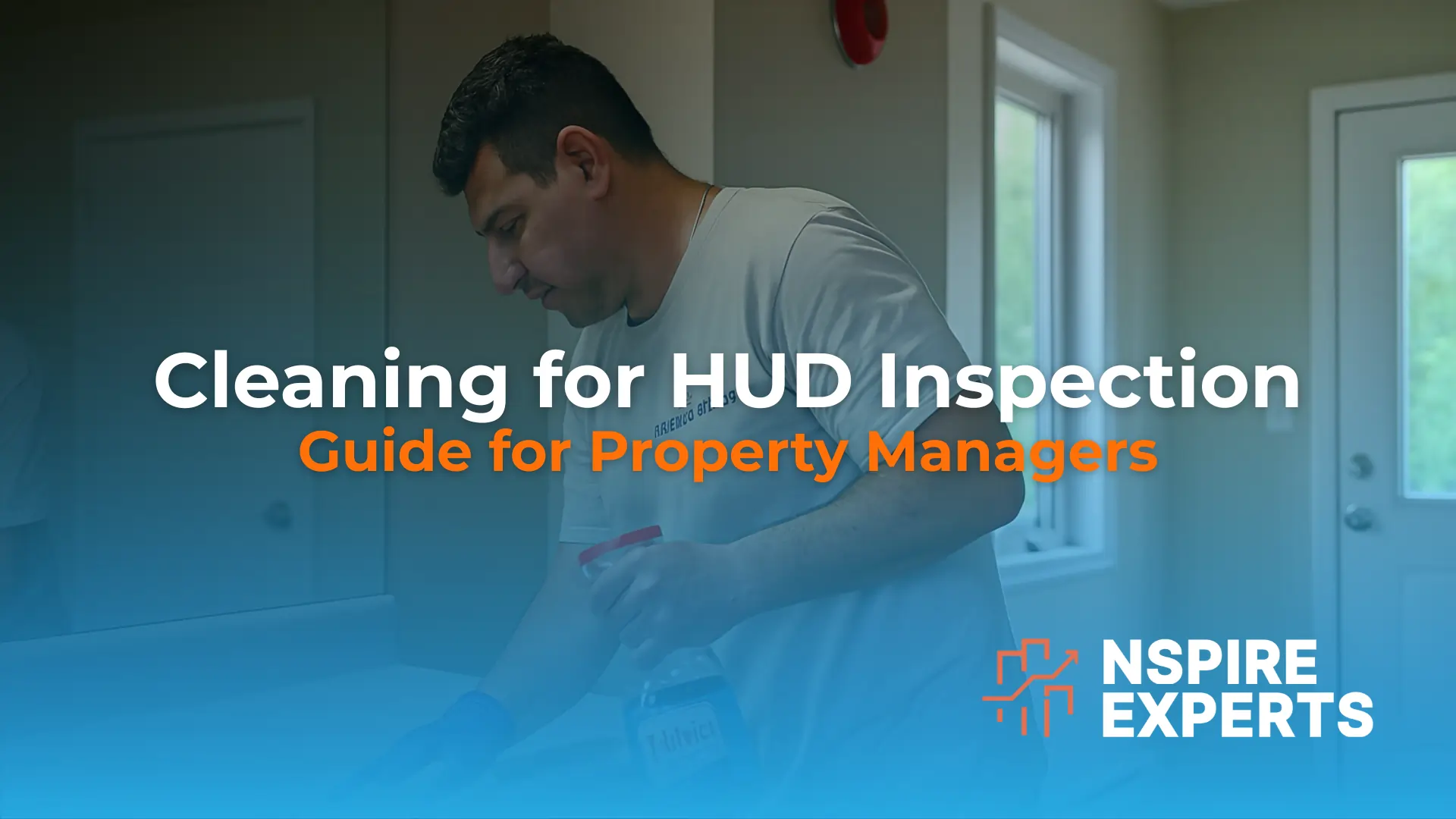Cleaning for HUD inspection is essential to ensure that your property passes inspection and remains eligible for HUD funding, particularly for programs like Section 8. When property managers fail to prepare their properties adequately, they risk costly delays, re-inspections, or even a loss of funding. In this blog post, we’ll walk you through a cleaning guide to prepare your property for HUD inspections, ensuring compliance with NSPIRE standards and avoiding common pitfalls that could lead to failed inspections.

Why Cleaning for HUD Inspection is Crucial
The Importance of HUD Inspections for Property Managers
HUD inspections are a vital part of property management, especially for properties under Section 8. These inspections ensure that rental units meet HUD’s health and safety standards, which are crucial for protecting tenants and maintaining the property’s eligibility for federal funding. Regular inspections help keep properties in good condition, improving tenant satisfaction and maintaining long-term property value.
- External Link: For further details on HUD inspections, visit the HUD REAC page.
The Role of Cleaning in Ensuring Compliance
Cleaning for HUD inspection is not just about tidying up a unit—it’s about ensuring that all safety and functionality requirements are met. Properties that are clean and well-maintained pass inspections more easily. Well-kept properties are also more likely to attract quality tenants and ensure tenant safety, which helps maintain high occupancy rates.
To help ensure your property is inspection-ready, you can use our NSPIRE Pre-Inspection Services.
Cleaning Guide for HUD Inspections
Entryways and Hallways
Entryways and hallways should be clean, well-lit, and free of obstacles. Make sure that entry doors are secure, windows open and lock properly, and flooring is in good condition and free of trip hazards. These areas are the first things that inspectors notice, so it’s important to keep them well-maintained.
For more details on safety features and standards, review the HUD REAC inspection standards.
Bathrooms
Bathrooms are a major focus during HUD inspections. Ensure that all plumbing fixtures are clean and functional, and that there are no leaks in the toilet, sink, or shower. Ventilation is also key—inspectors will look for functional exhaust fans to prevent mold or moisture buildup. Don’t forget to check the water heater and ensure that it’s functioning properly.
For detailed guidelines on preparing for NSPIRE inspections, check our NSPIRE Pre-Inspection Services.
Kitchen Areas
Kitchens are high-traffic areas that require thorough cleaning. Ensure that all appliances—such as the stove, refrigerator, and dishwasher—are clean, free of debris, and fully operational. Inspectors will also check that the plumbing and ventilation are up to code, and that safety features, like gas lines and electrical outlets, are secure.
Floors and Carpeting
Floors should be clean and in good condition. Inspectors may flag any flooring that is damaged or stained. Whether the floors are carpeted, tile, or hardwood, ensure that they are thoroughly cleaned and free of visible damage. Properly maintained floors not only contribute to a successful inspection but also contribute to tenant satisfaction.
Windows and Doors
Windows and doors are checked for security and functionality. All windows should be easy to open and close, and the locks must be secure. Doors should also be fully functional, including their locks. Glass should be free from cracks or damage. Inspectors will ensure these features are up to HUD’s standards.
Safety Features
Safety features like smoke detectors and carbon monoxide alarms are essential to passing the HUD inspection. Make sure they are located on each floor, tested regularly, and fully operational. Failing to maintain these safety features can result in failed inspections and delays.
Learn more about NSPIRE standards and safety features here.

NSPIRE Standards and HUD Inspection Compliance
Aligning with NSPIRE Standards
It’s crucial that all cleaning for HUD inspection aligns with NSPIRE standards. These standards were established to ensure that properties receiving HUD funding provide safe, livable conditions for tenants. When cleaning and maintaining your property, always keep NSPIRE standards in mind to ensure compliance. This includes keeping systems like plumbing, heating, and electrical in top condition, and making sure all safety features are intact.
Explore the NSPIRE Standards to fully understand the requirements for passing a HUD inspection.
Common Areas and Exterior Cleaning
Don’t forget to clean common areas such as lobbies, stairwells, and outdoor spaces. A clean, welcoming exterior is essential for creating a positive first impression. For HUD inspections, these areas must meet basic safety standards and be free from hazards. Ensure that exterior lighting is working and that outdoor walkways are clean and well-maintained.

Final Touches Before the Inspection
Final Walkthrough Checklist
Before the inspection, conduct a final walkthrough of the property to ensure everything is in top shape. Double-check the entryway, bathrooms, kitchen, and safety features. Ensure that smoke detectors and carbon monoxide alarms are working, appliances are functional, and plumbing is in good condition.
Schedule a Pre-Inspection
Consider scheduling an NSPIRE pre-inspection before the official HUD inspection. A pre-inspection helps identify any potential issues that could cause a failed inspection. By addressing these issues early, you can save time, money, and avoid unnecessary delays.
Schedule a free NSPIRE pre-inspection to ensure your property is ready.

Prepare Your Property for a Smooth HUD Inspection
Key Takeaways for Property Managers
Proper cleaning for HUD inspection is a critical step in ensuring your property passes the inspection with flying colors. By following the steps outlined in this checklist and ensuring compliance with NSPIRE standards, property managers can avoid inspection failures and maintain their eligibility for HUD funding.
Next Steps: Download Your Free Guide
For further guidance, download our free NSPIRE checklist to ensure your property is inspection-ready. This comprehensive guide includes all the necessary steps to prepare your property and avoid common inspection failures.
Get a Free Quote for Your HUD Inspection Preparation
If you need expert help preparing for a HUD inspection, NSPIRE Experts can assist. Contact us today for a free consultation and get the support you need to ensure your property passes the inspection.
